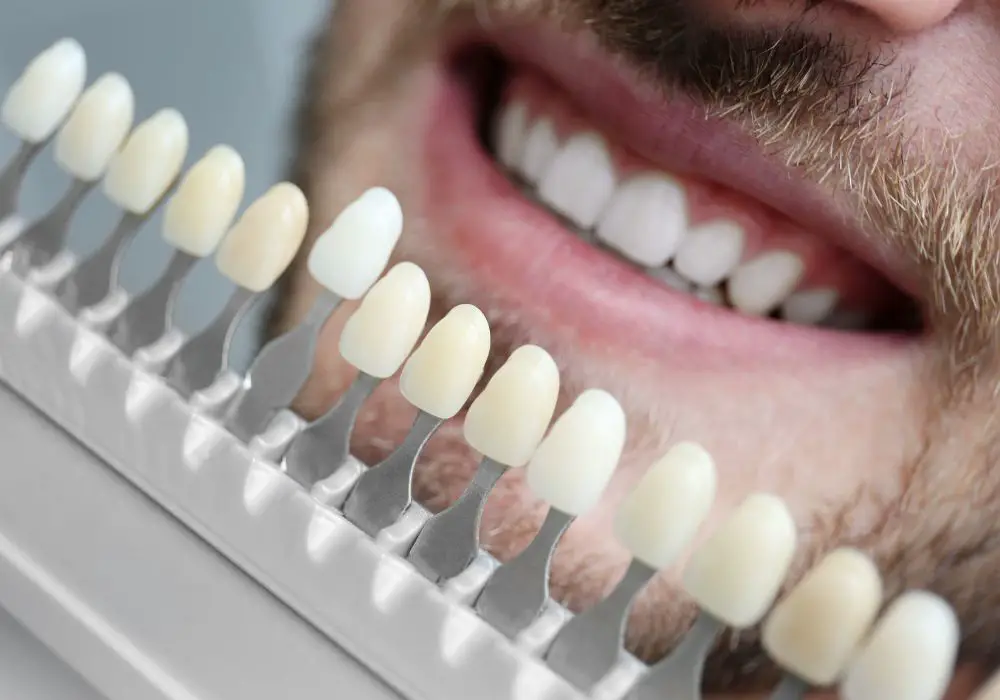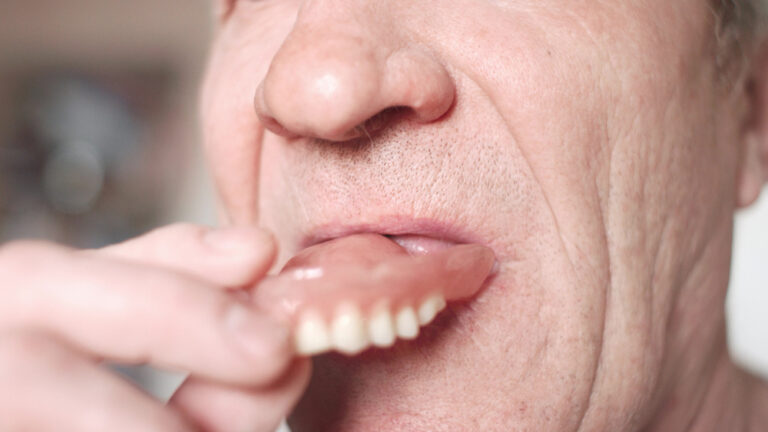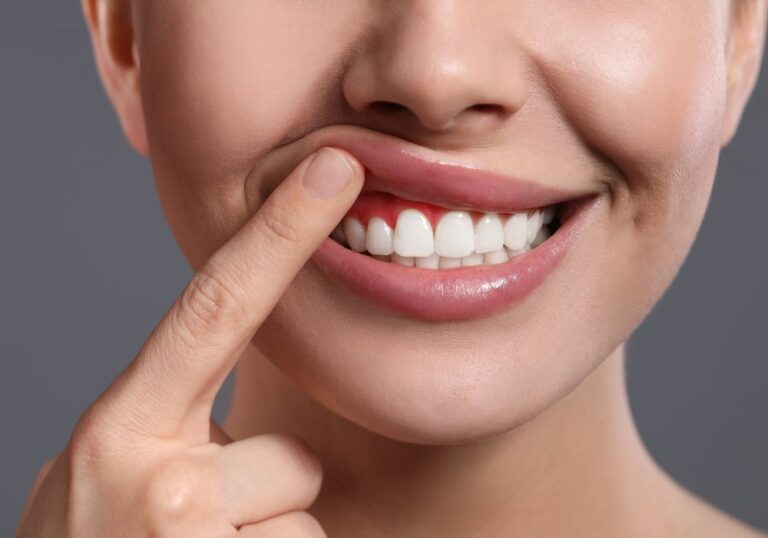Are you self-conscious about your crooked teeth but hesitant to undergo orthodontic treatment or braces? Composite veneers may be a solution for you. These veneers are a popular cosmetic dental treatment that can improve the appearance of your teeth. But can you get composite veneers on crooked teeth?
Composite veneers are thin layers of resin material that are applied to the front surface of your teeth. They can be used to correct a variety of dental issues, including discoloration, chips, gaps, and even crookedness. While traditional orthodontic treatment may be necessary for severe cases of crooked teeth, composite veneers can be a less invasive and more affordable option for those with minor alignment issues.
If you are considering composite veneers for your crooked teeth, it is important to consult with a qualified dentist to determine if you are a good candidate. The dentist will evaluate the severity of your crookedness and discuss your goals for treatment. They will also explain the risks and benefits of composite veneers and provide you with a treatment plan that is tailored to your specific needs.
Understanding Composite Veneers

Composite veneers are a popular cosmetic dentistry option that can help improve the appearance of your teeth. They are thin shells that are placed on the front surface of your teeth to cover up any imperfections. If you have crooked teeth, you may be wondering if composite veneers are a good option for you. Here’s what you need to know:
How Composite Veneers Work
Composite veneers are made of a tooth-colored resin material that is applied to the surface of your teeth. The resin is then shaped and polished to match the natural shape and color of your teeth. Composite veneers are a less invasive and more affordable option than porcelain veneers. They can be completed in just one visit to the dentist and require little to no preparation of your natural teeth.
Can You Get Composite Veneers on Crooked Teeth?
Composite veneers can be used to improve the appearance of crooked teeth. However, they are not a solution to correct the alignment of your teeth. If your teeth are severely crooked, you may need to consider orthodontic treatment such as braces or clear aligners to correct the underlying issue.
Composite veneers can be used to cover up minor alignment issues such as small gaps or slightly crooked teeth. Your dentist will assess your teeth and determine if composite veneers are a suitable option for you.
Benefits of Composite Veneers
Composite veneers offer several benefits, including:
- Improved appearance of your teeth
- Quick and easy procedure
- Less invasive than other cosmetic dentistry options
- Affordable compared to porcelain veneers
However, it’s important to note that composite veneers may not be as durable as porcelain veneers. They may need to be replaced more frequently, especially if you have poor oral hygiene habits.
Cost of Composite Veneers
The cost of composite veneers varies depending on several factors, including the number of teeth being treated and the complexity of the procedure. On average, composite veneers cost between $250 and $1,200 per tooth. Your dental insurance may cover part of the cost of composite veneers, but it’s important to check with your insurance provider beforehand.
Overall, composite veneers can be a great option to improve the appearance of your teeth, including crooked teeth. However, it’s important to consult with your dentist to determine if composite veneers are a suitable option for you.
Composite Veneers and Crooked Teeth
If you have crooked teeth, you may be wondering if composite veneers are a good option for you. Composite veneers are a popular cosmetic dental treatment that can improve the appearance of your teeth. However, whether or not they are a good choice for crooked teeth depends on the severity of the misalignment.
Composite veneers are made of a tooth-colored resin that is applied to the surface of your teeth. They can be used to cover up a variety of cosmetic issues, including chipped, discolored, or misshapen teeth. However, they are not a good choice for teeth that are severely crooked or misaligned. In these cases, orthodontic treatment such as braces may be necessary to correct the problem.
If your teeth are only slightly crooked or misaligned, composite veneers may be a good option. They can be used to improve the appearance of your teeth and give you a more confident smile. However, it is important to keep in mind that composite veneers are not a permanent solution. They may need to be replaced after several years, and they may not be as durable as other types of veneers.
If you are considering composite veneers for your crooked teeth, it is important to talk to your dentist about your options. They can help you determine if composite veneers are a good choice for you, or if another type of treatment may be more appropriate. With the right treatment, you can achieve a beautiful, healthy smile that you can be proud of.
The Procedure of Applying Composite Veneers on Crooked Teeth

If you have crooked teeth and are considering composite veneers, it’s important to understand the procedure involved. Here is a breakdown of what you can expect during the process.
Initial Consultation
Before getting composite veneers, you will need to schedule an initial consultation with your dentist. During this appointment, your dentist will examine your teeth to determine if composite veneers are the right option for you. They will also discuss the process and answer any questions you may have.
The Veneer Application Process
Once you have decided to move forward with composite veneers, the next step is the application process. Here is an overview of what to expect:
- Tooth Preparation: Your dentist will prepare your teeth by removing a small amount of enamel to make room for the veneers.
- Bonding: A special bonding agent will be applied to your teeth to help the veneers adhere properly.
- Composite Veneer Application: Your dentist will apply the composite material to your teeth and shape it to the desired shape and size.
- Curing: A special light will be used to harden the composite material.
- Finishing: Your dentist will polish the veneers to ensure they look natural and blend in with your other teeth.
Post Procedure Care
After the veneers have been applied, it’s important to take proper care of them to ensure they last as long as possible. Here are some tips:
- Avoid Hard Foods: Composite veneers are durable, but they can still chip or break if you bite down on hard foods. Avoid biting into things like ice or hard candy.
- Brush and Floss Regularly: Good oral hygiene is important for maintaining the health of your teeth and veneers. Brush and floss regularly, and use a non-abrasive toothpaste.
- Regular Check-Ups: Regular dental check-ups are important for monitoring the health of your veneers and catching any issues early on.
Overall, composite veneers can be a great option for improving the appearance of crooked teeth. By understanding the procedure and taking proper care of your veneers, you can enjoy a beautiful, confident smile.
Benefits of Composite Veneers on Crooked Teeth
If you have crooked teeth, you may be self-conscious about your smile. Fortunately, composite veneers can be a great solution to improve the appearance of your teeth. Here are some benefits of composite veneers on crooked teeth:
- Improved appearance: Composite veneers can improve the appearance of your teeth by making them look straighter and more even. They can also cover up stains and discoloration, giving you a brighter smile.
- Non-invasive: Unlike traditional braces or other orthodontic treatments, composite veneers are non-invasive. They do not require any drilling or removal of tooth enamel, making them a great option for those who are hesitant to undergo more invasive treatments.
- Quick and easy: Getting composite veneers is a quick and easy process. The veneers can be applied in just one visit to the dentist, and the process typically takes only a few hours.
- Affordable: Composite veneers are typically more affordable than other cosmetic dental treatments, such as porcelain veneers or orthodontic treatments. This makes them a great option for those who want to improve their smile without breaking the bank.
- Durable: Composite veneers are durable and can last for many years with proper care. They are resistant to stains and chipping, making them a great long-term solution for crooked teeth.
Overall, composite veneers can be a great option for those with crooked teeth who want to improve the appearance of their smile. They are non-invasive, quick and easy, affordable, and durable, making them a great long-term solution for a brighter, straighter smile.
Potential Risks and Complications

While composite veneers are generally considered safe, there are some potential risks and complications to be aware of before getting the procedure done.
Tooth Sensitivity
One of the most common side effects of composite veneers is tooth sensitivity. This is because the procedure involves removing a small amount of enamel from the tooth surface, which can expose the sensitive inner layers of the tooth. You may experience some discomfort or sensitivity to hot or cold temperatures after getting composite veneers, but this should subside within a few days or weeks.
Chipping or Cracking
Composite veneers are not as durable as porcelain veneers and may be more prone to chipping or cracking. You should avoid biting down on hard objects or using your teeth as tools to prevent damage to your veneers.
Discoloration
Composite veneers may be more prone to staining or discoloration than porcelain veneers. You should avoid smoking and consuming dark-colored foods and beverages to prevent discoloration of your veneers.
Allergic Reactions
In rare cases, some people may have an allergic reaction to the materials used in composite veneers. If you experience any unusual symptoms such as swelling or itching after getting veneers, you should contact your dentist immediately.
Overall, composite veneers are a safe and effective way to improve the appearance of crooked teeth. However, it is important to discuss any potential risks and complications with your dentist before getting the procedure done.
Alternatives to Composite Veneers for Crooked Teeth
If you have crooked teeth, composite veneers may not be the best treatment option for you. Here are some alternatives to consider:
Braces
Braces are a popular option for straightening crooked teeth. They work by applying constant pressure on the teeth, gradually moving them into the desired position. While braces can be uncomfortable and require regular adjustments, they are a reliable way to achieve a straighter smile.
Clear Aligners
Clear aligners, such as Invisalign, are an alternative to traditional braces. They work by using a series of clear, removable aligners to gradually shift your teeth into the desired position. Clear aligners are a popular choice for adults who want to straighten their teeth without the noticeable appearance of braces.
Dental Bonding
Dental bonding is a procedure in which a tooth-colored resin is applied to the teeth and hardened with a special light. This can be used to fill in gaps, repair chips, and improve the appearance of crooked teeth. While bonding is not as durable as veneers and may need to be replaced over time, it is a more affordable option.
Crowns
Crowns are a type of dental restoration that covers the entire tooth. They can be used to improve the appearance of crooked teeth, as well as to strengthen and protect damaged teeth. While crowns are a more invasive option than veneers or bonding, they can be a good choice for teeth that are severely damaged or decayed.
Overall, there are several alternatives to composite veneers for crooked teeth. Talk to your dentist to determine which option is best for you.
Frequently Asked Questions
Are composite veneers a good option for correcting crooked teeth?
Composite veneers can be a good option for correcting minor crooked teeth. They are thin shells that are placed over the front of teeth to improve their overall appearance. However, if the misalignment affects your overall bite or if tooth alignment is considered moderate to severe, aligners or braces will be needed to make necessary corrections.
Can composite veneers be placed over teeth with gaps?
Yes, composite veneers can be placed over teeth with gaps. They are designed to hide imperfections and can be used to close small gaps between teeth. However, if the gap is too large, other cosmetic dental procedures may be required.
Is it possible to get composite bonding on crooked teeth?
Yes, composite bonding can be used to correct minor crooked teeth. This procedure involves applying a tooth-colored composite resin to the surface of the tooth and shaping it to improve the appearance of the tooth.
Can cosmetic dentistry help fix crooked teeth?
Yes, cosmetic dentistry can help fix crooked teeth. There are several cosmetic dental procedures that can be used to improve the appearance of crooked teeth, including veneers, bonding, and orthodontic treatment.
Can veneers be used to fix an overbite?
Veneers are not typically used to fix an overbite. Orthodontic treatment, such as braces or clear aligners, is usually required to correct an overbite.
Can you get veneers if you have missing teeth?
Veneers are not typically used to replace missing teeth. Dental implants or bridges are usually recommended to replace missing teeth.







